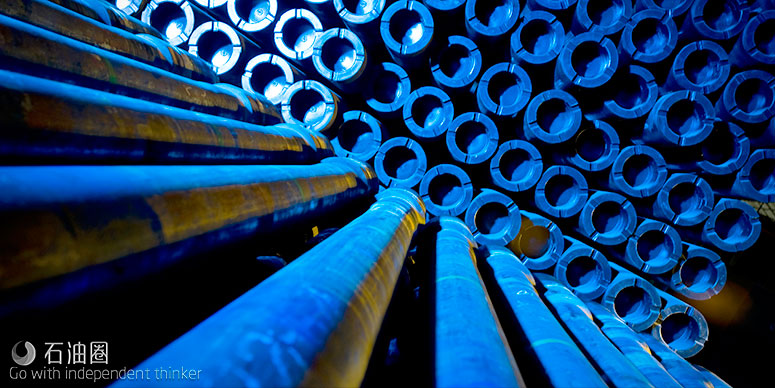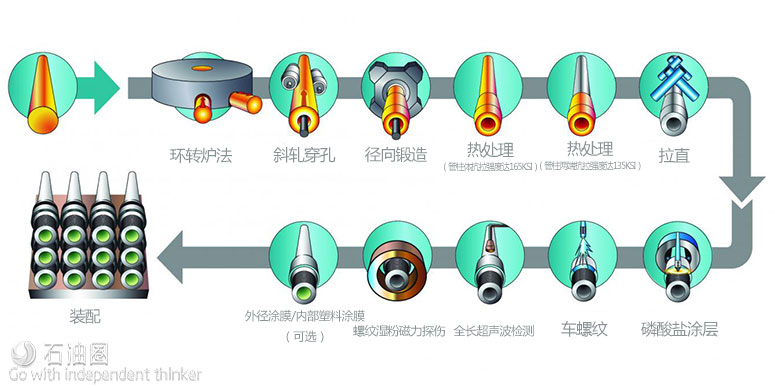Heavy-duty Landing String For Deepwater Applications
As demand for energy continues to increase, the search for vital energy resources is expanding farther offshore into harsher and deeper waters. Some operating companies are pioneering exploration and development projects in water depths up to 3,658 m (12,000 ft) that involve a large number of technological challenges. The combination of a deepwater environment and the increased total depth being drilled to reach some reservoirs increases the demand for new technology and services. Completion and intervention in harsh conditions require operators to set and run larger and heavier casing strings with hook loads approaching or exceeding 2.5 million pounds.
Drillpipe is traditionally used as a landing string to perform such operations in shallower waters. But those conventional landing strings cannot withstand high hook loads in deeper water due to the slip crushing phenomenon. Slips are being used to grip the pipes on the rotary table; the concentration of stresses might damage or in the worst-case scenario even crush the pipe under higher loads. Both slips and landing string designs were revisited to address the slip crushing phenomenon and to provide a safe way to run heavy casing strings in deep offshore projects.
The challenge
Slip crushing is a major problem pertinent to the design of landing strings and slips for deepwater operations. These strings are designed to run long and heavy casings, tiebacks or liners. The total weight of these strings might approach or exceed two million pounds at the mud line. Adding the additional weight of the landing string back to the rotary table creates a serious design problem regarding both the landing string itself and the handling equipment. Slip-based handling systems work well in most instances but can lead to biaxial loading from the tension and radial loads exerted by slip inserts. As a result of biaxial loads, the axial load rating of the landing string is reduced.
Drillpipe (landing string) and slip devices manufacturers have to adopt new designs to enhance the slip crushing resistance of the landing system. Moreover, both slips and landing string design enhancements must be tested to ensure the integrity of the solution.
New landing system
To be able to set and run larger and heavier casing strings with hook loads approaching or exceeding 2.5 million pounds, a heavy-duty landing system was developed and is available on the market. The CrushFree Landing String is capable of landing heavy loads while ensuring slip crush resistance. It includes an extended slip with enhanced design (coupled with a new greasing system), a 2.5-million-pound-rated landing carrier and a pipe with a thick-walled high-strength material section, a lightweight tube and rotary-shouldered connections (Figure 1).
One of the current operational challenges with existing heavy-duty landing strings is linked to the positioning of the slips, particularly when using extended slip designs. The limited length of the slips area requires additional time for proper positioning and setup. To address these issues, a new slip crushing resistant section design was developed. The combination of an extended crush-proof section and the absence of a heat-affected zone in that particular area decreases running time while completely eliminating the risk of setting the slips on a weak point. The versatile design allows fit-for-purpose crush-proof section lengths and is suitable for extended slips.
To ensure the tensile capacity required by the application, the slip section and the rest of the tube are heat-treated up to 150 kips per square inch (ksi) or 165 ksi, which is substantially higher than the highest grade as defined in the American Petroleum Institute 5DP S-135 standard. However, the makeup torque to be applied on the connector shall be within the range of what makeup tongs can handle. For this reason the connection area of the landing string joint will be submitted to a further heat treatment to bring the minimum yield strength of the material back to a more conventional value (135 ksi). The manufacturing process of the weld-free landing string joint is presented in Figure 2.
Extra long slips were developed to reduce the pipe crushing effect. The longer the slips, the longer the contact area. Increasing the contact area will reduce the pipe crushing force to the pipe. However, this effect decreases the longer the slip is.
The main problem with pipe crushing is the gaps between the slips. Using three slips will cause a big gap and/or a bad support on the dies on the side of the slips. A new system was developed to handle four slips in a double-halved body. The gaps are reduced to a minimum, and even the dies on the side are supported perfectly on the back of the slip. A constant and even stress distribution was a main criteria for the new slip design, which has been enhanced due to the four-slip design with perfect stress distribution.
The friction factor affects pipe crushing. Applying the correct amount of grease is very important. Because of this improvements to the greasing system were made. Air and grease are fed through a two-pipe system, with the inner pipe containing grease and the outer containing air. This system sprays the grease directly in a wide angle to the slip backside, adding the correct amount of grease to the slip system and causing a repeatable and accurate system. Guides based on rollers on the slip side were added to ensure accurate slip placement.

 石油圈
石油圈


